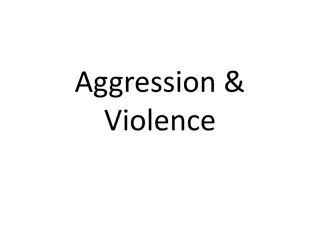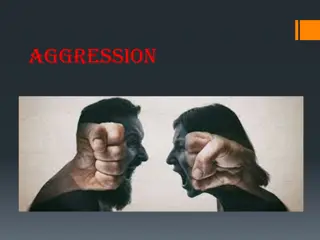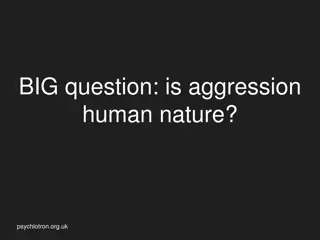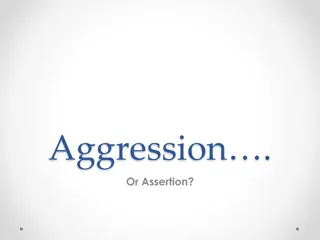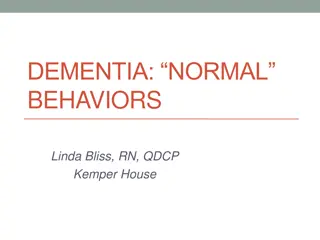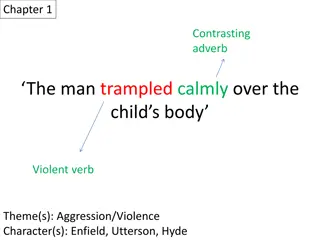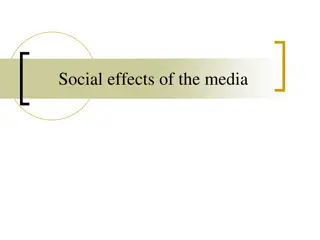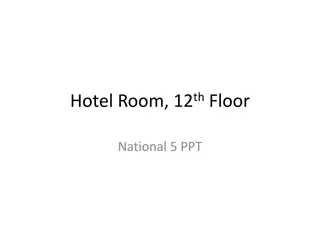Understanding Cat Aggression and How to Deal with It
Cat aggression towards humans can stem from various reasons such as fear, handling issues, play-related behaviors, pregnancy, pain, or redirected aggression. This behavior can vary among different cat breeds. Recognizing the triggers and responding appropriately is essential to manage and prevent cat bites. Consultation with a professional can provide insights on rehabilitation methods for aggressive cats.
Download Presentation

Please find below an Image/Link to download the presentation.
The content on the website is provided AS IS for your information and personal use only. It may not be sold, licensed, or shared on other websites without obtaining consent from the author. Download presentation by click this link. If you encounter any issues during the download, it is possible that the publisher has removed the file from their server.
E N D
Presentation Transcript
The Cat Behaviour and Welfare 14. What can you do when the cat bites? Bjarne O. Braastad Professor of Ethology Department of Animal and Aquacultural Sciences, Norwegian University of Life Sciences, NMBU, s, Norway The Cat - Behaviour and Welfare - Bjarne O. Braastad 0 Norwegian University of Life Sciences
Cat breed codes in figures The European Easy-Mind System (EMS) is used as breed codes in the following figures. EMS codes are used internationally by FIFe, the European Cat Fancier Society (F d ration Internationale F line). EMS Code ABY Breed name Abyssinian Bengal Bristish Shorthair Burmese Cornish Rex Devon Rex Housecat Shorthair (true EMS code is HCS) Housecat Longhair (true EMS code is HCL) Egyptian Mau Maine Coon Norwegian Forest Cat Oriental breeds (Balinese, Oriental Shorthair, Oriental Longhair, Seychellois Shorthair) No. per breed 21 BEN 18 BRI 29 BUR 16 CRX 12 DRX 13 HK 410 HL 287 MAU 20 MCO 80 NFO 48 ORI 25 PER 18 Persian Ragdoll Sacred Birman Siamese Siberian RAG 45 SBI 41 SIA 17 SIB 37 Total = 17 N =1137 The Cat - Behaviour and Welfare - Bjarne O. Braastad Norwegian University of Life Sciences 1
Aggression towards humans an overview Aggression towards humans can have many reasons: Fear-conditioned aggression feels threatened by a person Handling-related aggression cuddling, lifting up, grooming Play-related aggression play-fighting Pregnant female can become aggressive towards humans she is insecure about Pain-induced aggression upon touch Redirected aggression The Cat - Behaviour and Welfare - Bjarne O. Braastad Norwegian University of Life Sciences 2
Aggression by touch; aggression towards owner Occurrence of the behaviour trait in 17 cat breeds. The Y axis shows score averages (M SE) on a 1-5 scale based on owner assessments. 1= Never, 2 = Seldom, 3= Now and then, 4 = Often, 5 = Always. The number above the breed code shows number of cats in the analysis. 5 Kruskal-Wallis, P < 0.0001 4.5 4 3.5 Mean +/- SE 3 2.5 2 1.5 mean 1 21 18 29 16 12 13 408 287 20 80 48 25 18 45 41 17 37 ABY BEN BRI BUR CRX DRX HK HL MAU MCO NFO ORI PER RAG SBI SIA SIB (Eriksen, 2014, Behavioural characteristics of pedigree cats in Norway. MSc thesis, Norwegian University of Life Sciences) The Cat - Behaviour and Welfare - Bjarne O. Braastad Norwegian University of Life Sciences 3
Aggression towards unfamiliar humans Occurrence of the behaviour trait in 17 cat breeds. The Y axis shows score averages (M SE) on a 1-5 scale based on owner assessments. 1= Never, 2 = Seldom, 3= Now and then, 4 = Often, 5 = Always. The number above the breed code shows number of cats in the analysis. 5 Kruskal-Wallis, P = 0.03 4.5 4 3.5 Mean +/- SE 3 2.5 2 1.5 mean 1 21 17 29 16 12 13 402 279 20 78 48 25 18 44 41 17 35 ABY BEN BRI BUR CRX DRX HK HL MAU MCO NFO ORI PER RAG SBI SIA SIB (Eriksen, 2014, Behavioural characteristics of pedigree cats in Norway. MSc thesis, Norwegian University of Life Sciences) The Cat - Behaviour and Welfare - Bjarne O. Braastad Norwegian University of Life Sciences 4
Biting without warning(not learnt aggression) Reasons: sudden nervousness, acute anxiety feels trapped hand-fear experienced being hit by the hand or other aversive handling under-stimulated often indoor cats moving hands or legs can stimulate predatory attack (predatory play) Measures: Respect a cat signalling that it wants to be left alone. Check if the cat approves of being lifted up before doing so. Avoid petting the stomach or legs. Play for at least half an hour every day without using the human body as a toy. Photo: Audun Braastad The Cat - Behaviour and Welfare - Bjarne O. Braastad Norwegian University of Life Sciences 5
More on cats behaviour and welfare is found here (in Norwegian) www.braastad.info Braastad s website on ethology, animal welfare, cats and human animal relationship www.facebook.com/KattenAtferdVelferd Facebook (Meta) site for the Norwegian cat book www.etologi.no website for the Norwegian Association of Ethologists www.etologi-dyrevelferd.no website on ethology and animal welfare for secondary schools www.animalpickings.com popular scientific website for the Research Group on Ethology and Animal Environment at the Norwegian University of Life Sciences The Cat - Behaviour and Welfare - Bjarne O. Braastad Norwegian University of Life Sciences 6
Thank you for listening to Bjarne. He believes that he understands me. But we have our secrets that no ethologist yet knows about. The Cat - Behaviour and Welfare - Bjarne O. Braastad Norwegian University of Life Sciences 7


